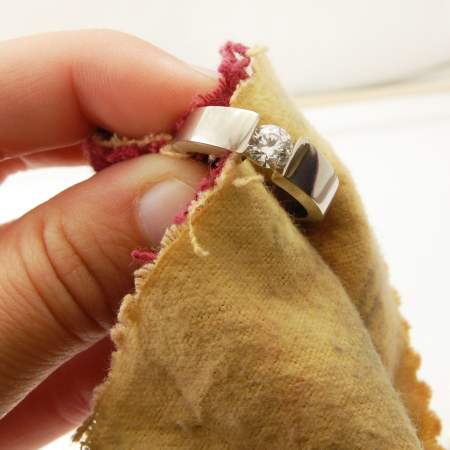Your diamonds and jewelry are precious to you, both intrinsically and sentimentally. Caring and maintaining them should be as important as the care and maintenance you put into anything else you value and cherish, like a car or home, yet it’s a lot simpler and inexpensive.
The first step to taking care of your diamonds and jewelry is to be aware when you are wearing them. They can be very fragile, especially with more intricate pieces, and over time they will go through wear and damage, but you can increase their longevity by being mindful of how everyday exposure could harm them. It’s as common as making sure they don’t receive heavy impact from slamming your hand with a diamond ring on, tossing your jewelry on the table, (accidently) tugging at your necklaces and bracelets, or even keeping your jewelry in your pocket or purse with your keys and other larger objects. If you’re doing sports or heavy activity, it’s best to take them off (it’s also a safety precaution!). In all situations, you risk scratching and breaking the diamond and metal. Gold, silver and platinum are very soft and can easily be damaged. Diamonds are much harder to make a dent, but one perfect blow can make a crack, and once there is a crack the diamond is vulnerable to shattering. Other exposures include chemicals from household cleaning or gardening supplies and the chlorine in swimming pools. In most cases, the diamond can withstand these, but gold and silver are prone to stain which will weaken the integrity of the metal. On small chain necklaces, clasps and the prongs that hold the diamond, they can soften and bend in which you risk losing them when they fall out.
Being aware of your diamonds and jewelry isn’t just to protect from damage, but also to reduce the risk of losing them. This is the most heartbreaking thing that could happen, but there are a few tips to keep in mind: 1. Know where you put them (Is it in your jewelry box? If you take it off, is it in a secure place?). 2. Make sure there are no loose parts and that it fits properly. Rings that are too loose on the finger can slip off, and clasps and prongs that aren’t attached and fitted properly could result in your necklace slipping right off your neck or your diamond falling out. 3. Take your jewelry off when you wash your hands, take a shower, or use the swimming pool (Once they fall off, it can go straight down the drain).
The next step is proper storage. If you keep your jewelry in a jewelry box, make sure it’s not over-crowded. The best way to scratch the metal is against other metals, and the best way to damage diamonds are other diamonds. Make sure items aren’t piled up on top of each other (ideally they should have their own compartment or hook). Especially for chain necklaces, where they can be knotted up together, untangling them is the most common way that the chain links will stretch and break right off. In addition, the jewelry box should be padded, or if you don’t have a jewelry box, a cloth pouch.
The last step is the maintenance. Diamonds and jewelry can collect a lot of dirt and oils when they are worn, and keeping that luxurious look is the point of wearing them in the first place. Cleaning both the diamond and metal can be as simple as using warm, soapy (dish soap) water and a soft toothbrush, rinsing, and buffing with a soft cloth. Don’t use sharp or pointy objects to get into the nook and cranny’s, and make sure you completely dry the piece to prevent water stains. There are also a number of different at-home solutions that can be found online which use laundry detergent, aluminum foil, ammonia, or baking soda (you can find a whole list of common and uncommon ideas). While these methods are proven to work, there are risks of damaging the gemstones that should not be exposed to these solutions. If you are doing it yourself, it’s best to stick to a simple soap and water solution. If you feel that you need cleaning beyond the at-home-do-it-yourself method, seek a professional that most jewelry stores provide. The same goes for repairs, resetting, and replatings (when the plate begins to wear down revealing the base metal).
We hope any of this advice is helpful and that you can keep the beauty of your jewelry for many more years!


